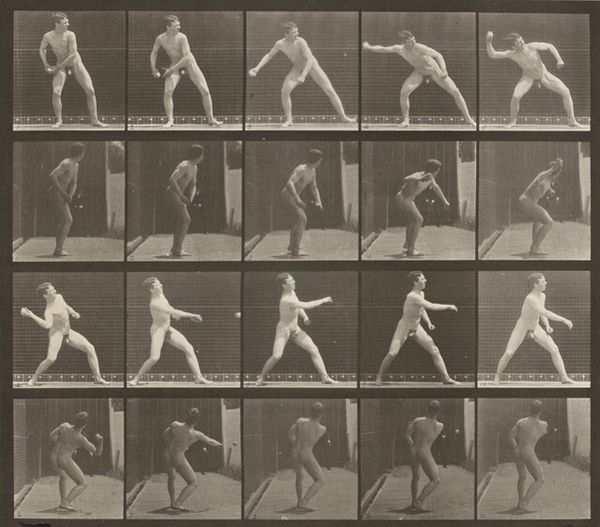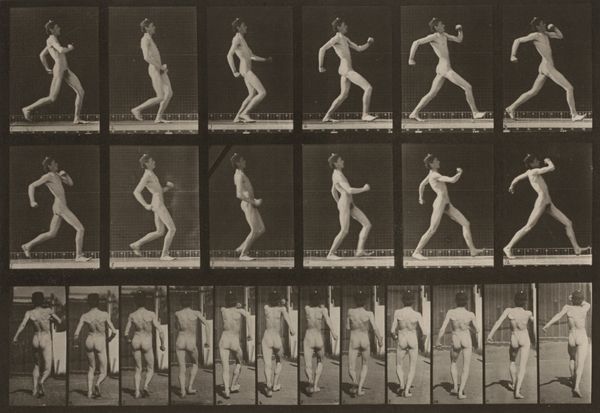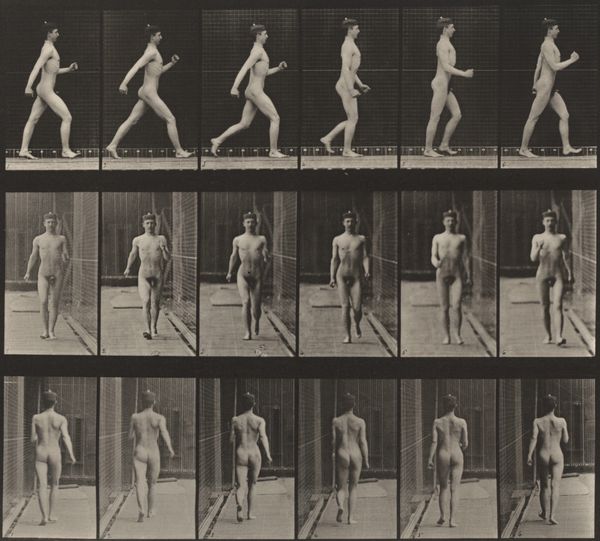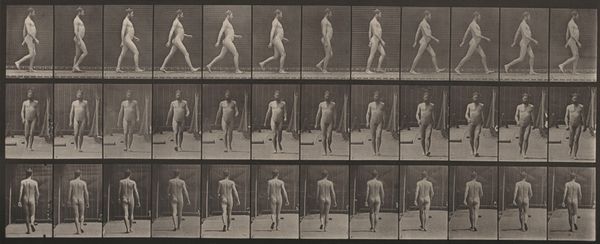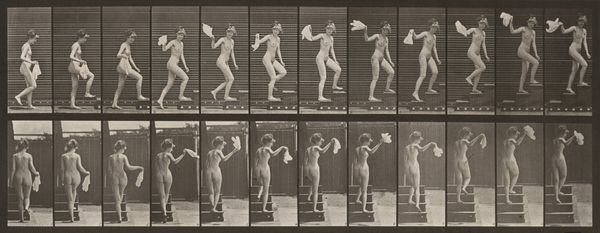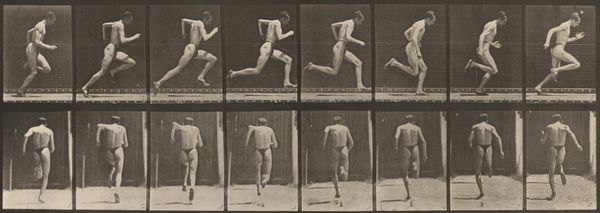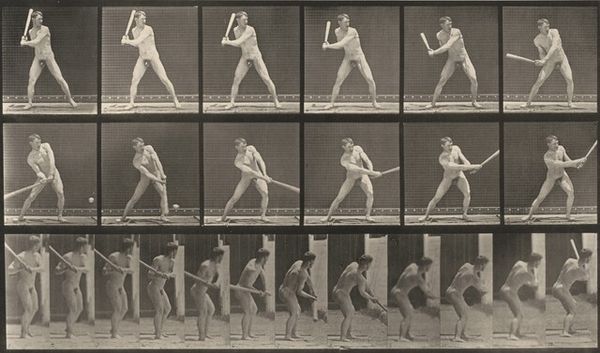
print, photography, gelatin-silver-print
#
16_19th-century
# print
#
sculpture
#
figuration
#
photography
#
england
#
gelatin-silver-print
#
pre-raphaelites
#
realism
Dimensions: 13.5 × 46.2 cm (image); 34.8 × 49.9 cm (paper); 48.3 × 61.3 cm (mount)
Copyright: Public Domain
Editor: We're looking at "Animal Locomotion, Plate 319" by Eadweard Muybridge, made in 1887. It's a gelatin-silver print, a series of photographs capturing movement. I find it fascinating how he breaks down motion, but also, there's something slightly unsettling about the grid and the starkness. What strikes you most when you look at this piece? Curator: The grid itself is a powerful symbol here. Before cinema, before the easy capture of movement, the grid imposed order, almost a scientific claim on the fluidity of life. Think about how ancient cultures depicted narrative through sequential imagery; Muybridge's grid shares that impulse to tell a story, but it also dissects, analyzes. Do you see any connections to earlier art traditions here? Editor: Well, I can see a connection to scientific illustration, of course, and maybe early attempts at animation? But what about the subject itself – a man throwing a ball? Is there a deeper meaning? Curator: Ah, the act of throwing! It echoes so many mythic themes. Think of classical sculptures of discus throwers, the idea of the body in dynamic action, reaching for a goal, exerting force on the world. This image captures a specific moment, yes, but also resonates with that broader human desire to master movement, to understand and represent it. It's about control and how we try to seize control through science and representation. Editor: I never thought about the act of throwing that way, connecting it to broader historical themes! I was so focused on the technology and the scientific aspect. Curator: Exactly! Muybridge gives us a peek into the human quest to freeze, dissect, and ultimately understand movement, an impulse stretching back millennia, made manifest through a new medium. We tend to remember him for the advancement in the technique, but iconography invites us to pause and meditate on this piece’s significance beyond science. Editor: I'm seeing how much more there is to this than just scientific study of movement! I'm really appreciating now how the symbolism creates a dialogue with past representations of human action. Thanks for sharing your insights!
Comments
No comments
Be the first to comment and join the conversation on the ultimate creative platform.

